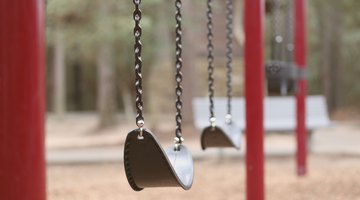Why Do School Fights Occur?
Nearly everyone has either witnessed or has been directly involved in a school fight. Suddenly the hallway is abuzz with excitement, students start to shuffle for a good spot to view the action, and someone yells out the announcement, "fight!"
Fighting is an unfortunate reality in many schools, either public schools or private schools. Although rates of school violence are on the rise, fighting is hardly a new development. For centuries, adolescents have gotten into altercations that resulted in bumps, bruises and a very angry principal. Although school fights are common, some still wonder why they occur. Every fight is different, but some common causes do exist.
Many school fights occur in high school with high school student altercations with other high schoolers, but some school fights have also occurred in middle school with middle school altercations. It is rare to see school fights occurring in elementary school, but it is not unheard of. Fights between students can be verbal or physical fights, and they can occur during the school day on school property or after-school.
In some cases, law enforcement can be involved as there are certain risk factors when dealing with school fights, and they can help with school safety overall. School staff may also get involved to break up fights, but in some cases, they may also make their way into a fight if a student decides to turn on them.
What are Some Common Reasons for School Fights?
- Differing Values
According to a recent Cato Institute study (See References 1), many school fights are caused by the forced mixing of students who come from different backgrounds and hold disparate core values. This study argues that the geographic zoning policies of schools contribute to violence, and in order to reduce the violence students should be allowed more choice in selecting their school.
- Lack of Respect
School violence can be the result of a simple lack of respect for others. There has been a push in recent years to integrate value based lessons into the school curriculum. Many schools currently teach character education courses in an attempt to provide students who lack good role models with a basic knowledge of how they should interact with their peers and teachers.
- Reputation Maintenance
Students often fight as a means of maintaining their reputations in their schools. Reputation is often seen as a precious commodity. If someone crosses a student who is concerned about his or her reputation, that student may feel forced to retaliate or risk being called weak and having his or her reputation damaged. This kind of reaction can stem from mental health issues surrounding appearance or involvement.
- Pop Culture Influence
By the time they get to middle and high school, most students can distinguish reality from TV and movies, but in lower grades, this distinction is commonly a bit more fuzzy. Some young students engage in fights merely because they are replicating what they saw on TV or in a film. These students are simply trying to copy the tough guys or gals they so adore, which is in turn exposing them to youth violence in some cases.
Dr. Adele M. Brodkin reported on this phenomenon in a recent article in "Early Childhood Today." She called on educators and parents to have frank discussions with students regarding pop culture influences, in an effort to reduce the number of incidents of violence that result from this type of mimicry. Aggressive behavior is also said to stem from pop culture influences. Cyberbullying is also a major factor in youth behaviors in pop culture as the concept becomes more known in recent times.
How Can We Avoid School Fights?
Problem-solving tactics should be taught to those working in schools as school staff and students attending schools to prevent school fights from occurring. Student fighting can be avoided with proper social skills and anger management as students can express their anger or feelings in other ways, without getting physical or acting physically as self-defense.
Violence prevention training is also essential for school staff to learn and enforce when these incidents occur. Conflict resolution lessons could be essential for this prevention as well. Risk behavior could also be monitored by school staff to prevent young people from starting school fights on school grounds.
Related Articles
References
Writer Bio
Erin Schreiner is a freelance writer and teacher who holds a bachelor's degree from Bowling Green State University. She has been actively freelancing since 2008. Schreiner previously worked for a London-based freelance firm. Her work appears on eHow, Trails.com and RedEnvelope. She currently teaches writing to middle school students in Ohio and works on her writing craft regularly.










